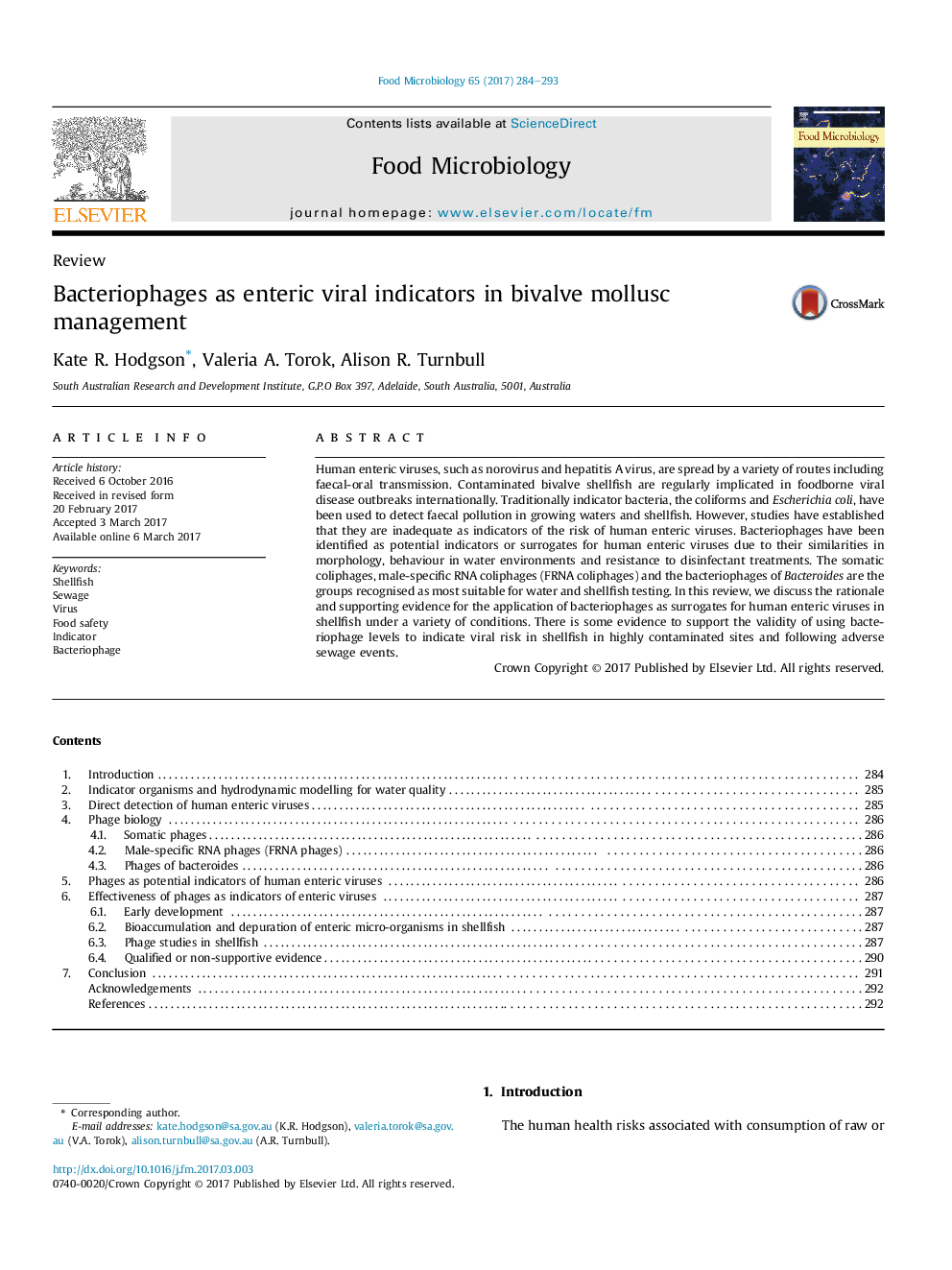| Article ID | Journal | Published Year | Pages | File Type |
|---|---|---|---|---|
| 5740155 | Food Microbiology | 2017 | 10 Pages |
â¢Microbial indicators of faecal pollution are poor indicators of enteric viral risk.â¢Phages have potential as indicators of human enteric viruses in shellfish.â¢Evidence supports the use in shellfish from contaminated and sewage impacted sites.â¢More studies on FRNA phages as indicators is required to support implementation.
Human enteric viruses, such as norovirus and hepatitis A virus, are spread by a variety of routes including faecal-oral transmission. Contaminated bivalve shellfish are regularly implicated in foodborne viral disease outbreaks internationally. Traditionally indicator bacteria, the coliforms and Escherichia coli, have been used to detect faecal pollution in growing waters and shellfish. However, studies have established that they are inadequate as indicators of the risk of human enteric viruses. Bacteriophages have been identified as potential indicators or surrogates for human enteric viruses due to their similarities in morphology, behaviour in water environments and resistance to disinfectant treatments. The somatic coliphages, male-specific RNA coliphages (FRNA coliphages) and the bacteriophages of Bacteroides are the groups recognised as most suitable for water and shellfish testing. In this review, we discuss the rationale and supporting evidence for the application of bacteriophages as surrogates for human enteric viruses in shellfish under a variety of conditions. There is some evidence to support the validity of using bacteriophage levels to indicate viral risk in shellfish in highly contaminated sites and following adverse sewage events.
